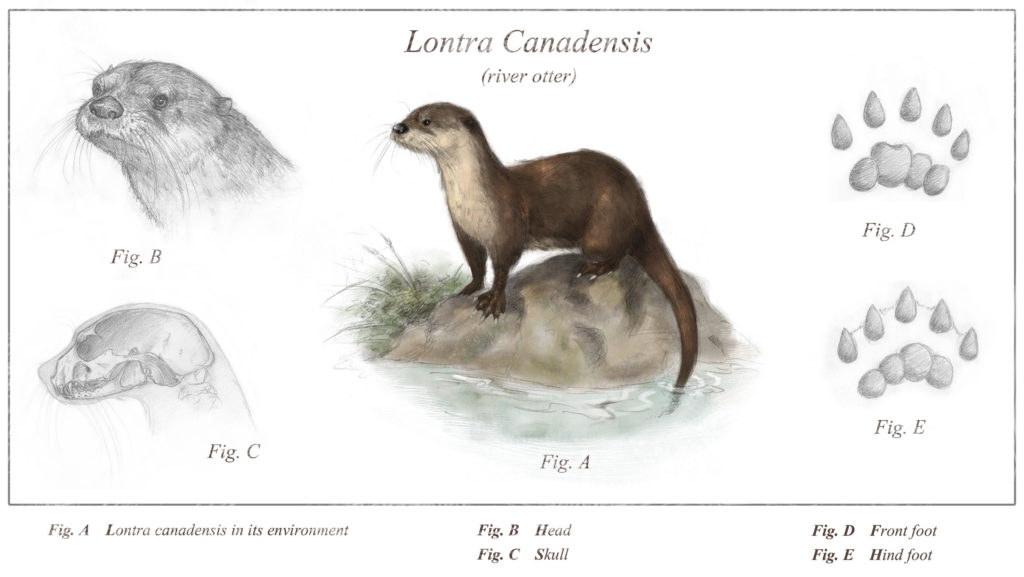Species Spotlight: River Otter
Learn about the North American river otter (Lontra canadensis), a fixture on healthy river systems throughout the lower Columbia River region.
From the brackish waters of the Wallacut to the cold, glacial-fed waters of the Klickitat, river otters can be found sliding, swimming, fishing, and playing in the wild channels of the Columbia River region. Because otters avoid polluted and developed areas, Land Trust field staff view their presence as an encouraging indicator of river health.
Identification
Members of the weasel family, otters are muscular mammals with thick brown fur and long tails. Built for underwater hunting, they have webbed feet, small ears and nostrils that close underwater, and a dense, dual-layered coat that traps air bubbles for insulation. One-foot-wide impressions of mud, snow, sand, or grass along the water’s edge, called “slides,” are common signs of an otter’s presence.
Life
Mothers and pups are prone to acrobatic play, as are mating pairs, but adults spend the majority of their time in solitude in freshwater river, lake, or marsh habitats. Otters prefer areas with moving water that doesn’t freeze over in winter. They establish waterside dens with underwater access to fishing areas and primarily eat fish, mollusks, and other aquatic invertebrates.
Status
The species is federally listed as of least concern. In the past 200 years, an unregulated fur trade, development, and pollution of waterways and estuaries led to a steep decline in river otter populations, particularly in the U.S. Midwest, East Coast, and Southeast. In recent years, reintroduction efforts in these areas have been successful. Pacific Northwest populations are thriving.
